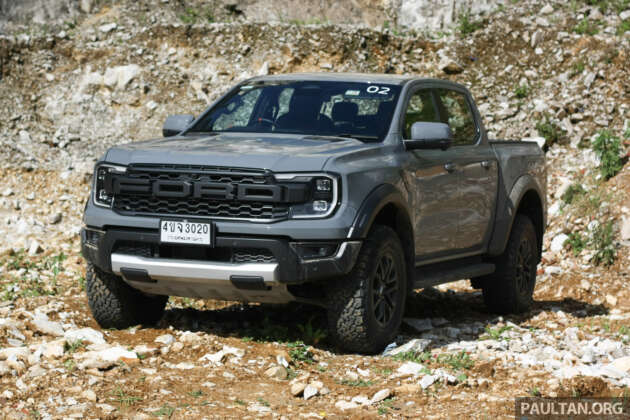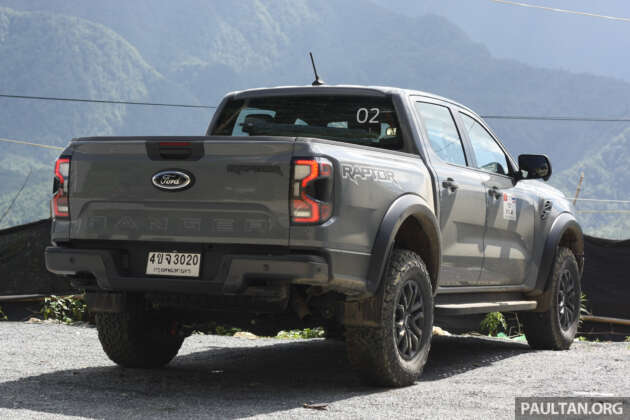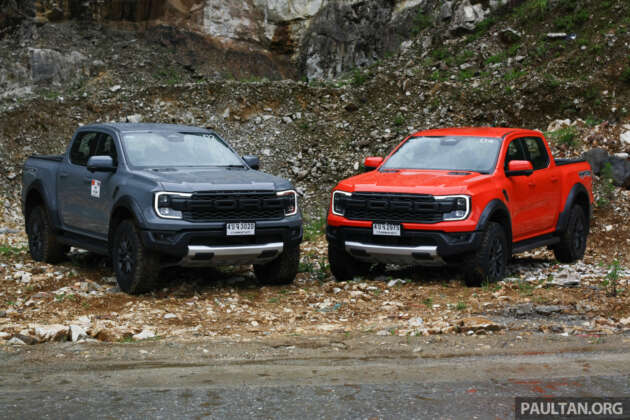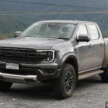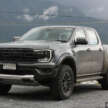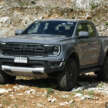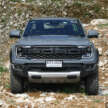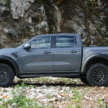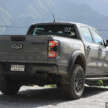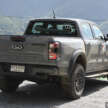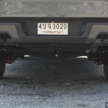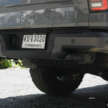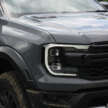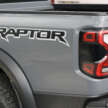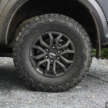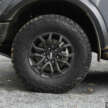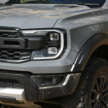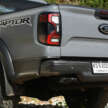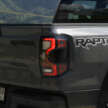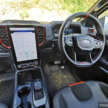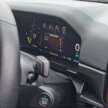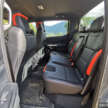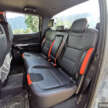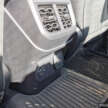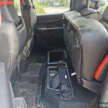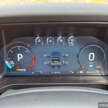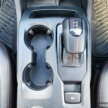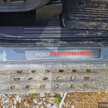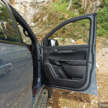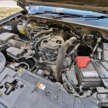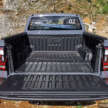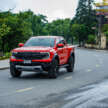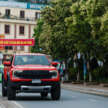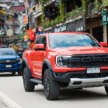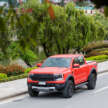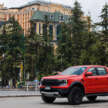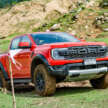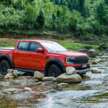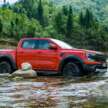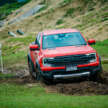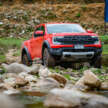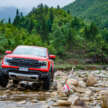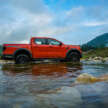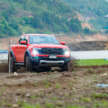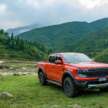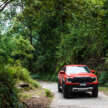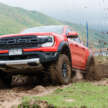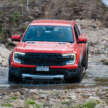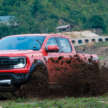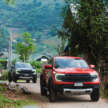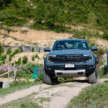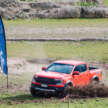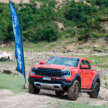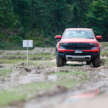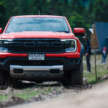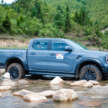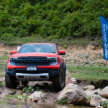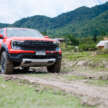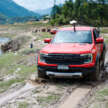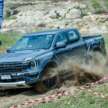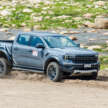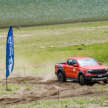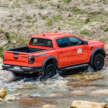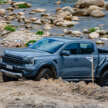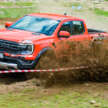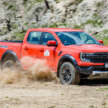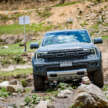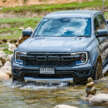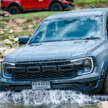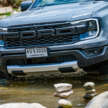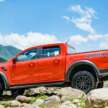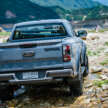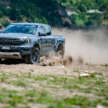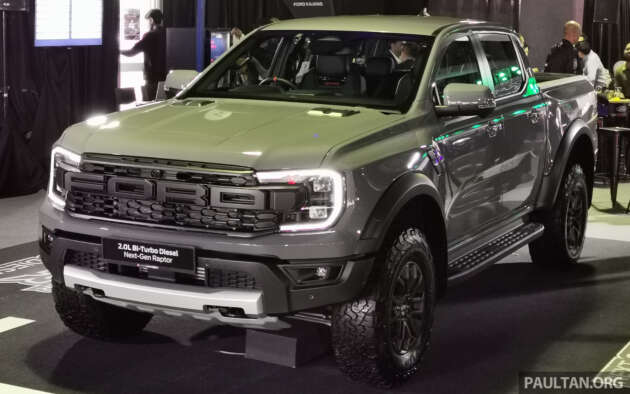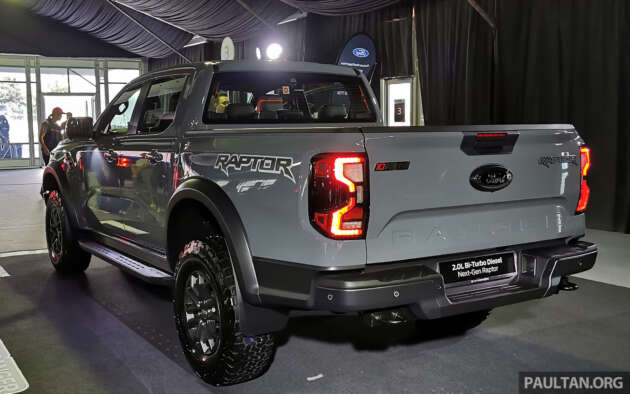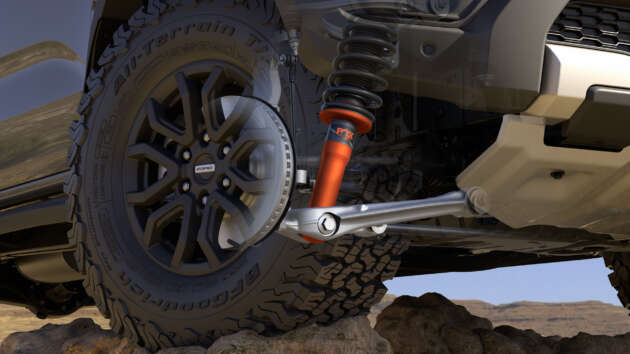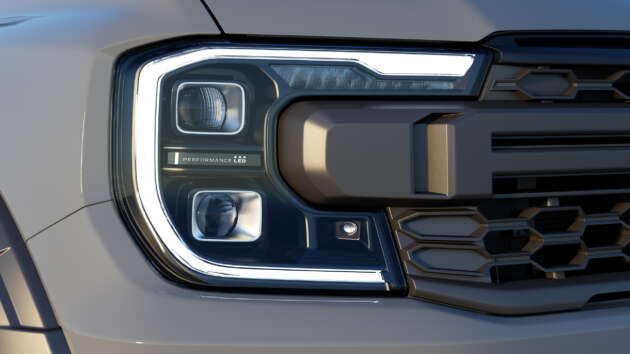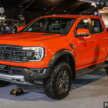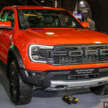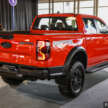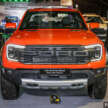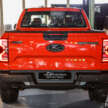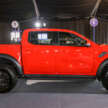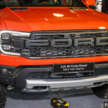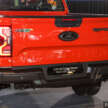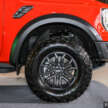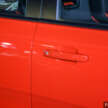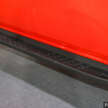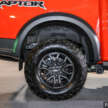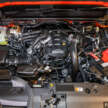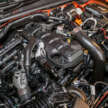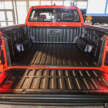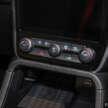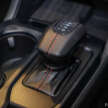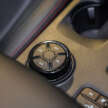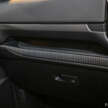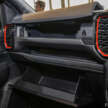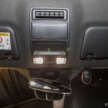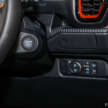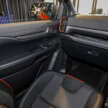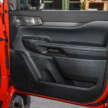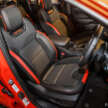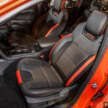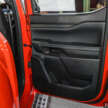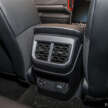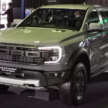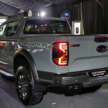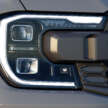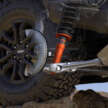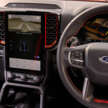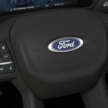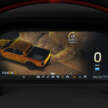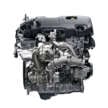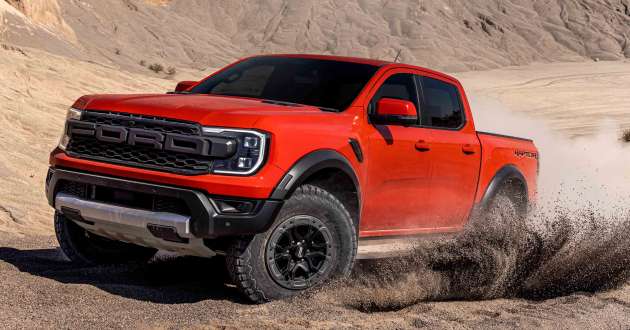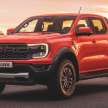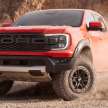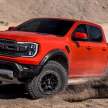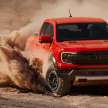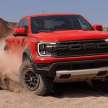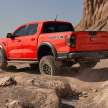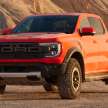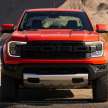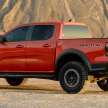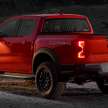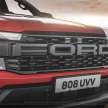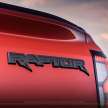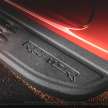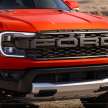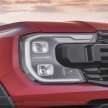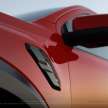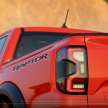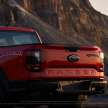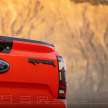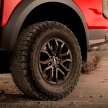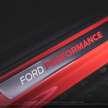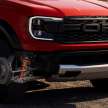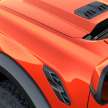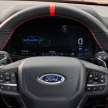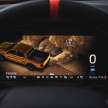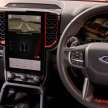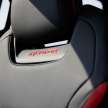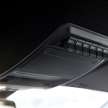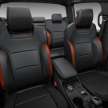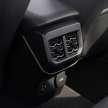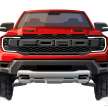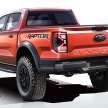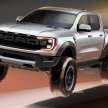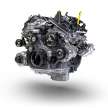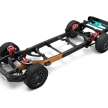A little under one year after the petrol-powered, 3.0L biturbo V6 engine Ford Ranger Raptor emerged on the Malaysian market, the 2.0L turbodiesel four-cylinder variant has been launched locally this month.
As such, the 3.0 litre petrol biturbo V6-powered variant that leads the current Ranger line-up is now joined by a 2.0L diesel variant. The latter continues to offer a tantalising alternative to the double-cab pick-up truck experience for enthusiasts of high-performance off-roading, with the entry price for it set at RM248,888, on-the-road without insurance.
This makes it exactly RM11,000 cheaper than the V6 petrol version, which is priced at RM259,888 (OTR without insurance). What do you get from that slightly less hefty price tag and a different powertrain? We had the opportunity to find out how the oil-burner measures up, putting it to the test against the V6 around the hills of Sa Pa, in the Lao Cai province of Vietnam.
Outwardly there is precious little that distinguishes the Ranger Raptor 2.0 Bi-Turbo Diesel – to give the variant its full name – from its petrol-powered twin with the 3.0L EcoBoost V6 under its bonnet. Even its exterior is all but identical, save for the pair of exhaust outlets on the 3.0L petrol variant. The diesel reverts to the regular Ranger layout of a single pipe that terminates deeper underneath the vehicle.
Moving inside, the diesel Raptor’s interior follows that seen on the 3.0L V6 petrol, replete with the orange highlights signifying the variant’s identity. Occupants still get access to the clear, portrait-oriented 12-inch touchscreen, which offers wireless Apple CarPlay and Android Auto connectivity.
While the Thai-spec diesel we sampled in northern Vietnam was specified with a six-speaker unbranded audio setup instead of the petrol variant’s Bang & Olufsen ensemble, our Malaysian market diesel variant has the same system as seen on the 3.0L V6 petrol. Connectivity via Apple CarPlay is straightforward, and streamed audio quality through the B&O setup is about as good as can be expected from a pick-up truck.
Away from the cosmetics, there are concessions in reverting to the diesel powertrain, however. For a start, the diesel variant brings back the relatively rattly diesel signature that is par for the pick-up truck course, and although advances in the powertrain type have brought considerable refinement over the years, sampling a petrol engine like the V6-powered Raptor drives home the contrast in audible smoothness between the two. The multi-cylinder thrum from the petrol unit adds to the sense of occasion too.
Delivery of power and torque is slightly more gradual from low RPM on the 3.0L V6 petrol, which builds revs strongly to its 583 Nm and 397 PS peak figures for torque and horsepower, respectively. Beyond the headlining output figures, the 2.0L diesel naturally also concedes to the petrol in terms of rev range and aural quality.
The hilly surroundings of our vehicle testing location in Sa Pa was double-edged in a sense. While offering terrain that was challenging enough to exercise some of a pick-up truck’s off-roading credentials, it was mostly low-speed driving within the confines of tight, twisty hillside roads, with the occasional foray into town, which remained low-speed anyway.
While nothing like the chaos of Ho Chi Minh City or even Hanoi, drivers – especially visiting ones such as our contingent – still very much needed to have one’s eyes on stalks and head on a swivel in the confines of a village like this, because one-way signage for locals on these roads are but merely suggestions. Reporting of the diesel-powered Ranger Raptor’s highway driving characteristics at any length will thus need to wait for a local stint.
Likewise, that of the differential configuration. The diesel Raptor makes do with just one limited-slip differential on the rear axle, while the petrol gets front and rear LSDs. On the drive, the diesel acquitted itself well during demonstrations, but perhaps more rigorous testing is needed to see if the lack of a front locking differential alters performance aspects.
That said, we can tell you that the diesel variant all but matches the 3.0L V6 petrol on the chassis front, with a key difference played out by the slight difference in damper specification.
While the petrol version gets the Live Valve 2.5-inch internal bypass units from renowned suspension components maker Fox, which adjust damping rates up to 500 times a second, the damper units in the diesel version do without the Live Valve feature.
The petrol and diesel versions of the Ranger Raptor we sampled in Vietnam were on different off-road courses, though there was sufficient overlap that showed the Live Valve-equipped petrol variant to have a slightly more sophisticated ride as well as body control over a similar rock crawl and river crossing path.
Additionally, our colleague Farid had a brief run in the 2.0L diesel Ranger Raptor on a short dirt course laid out at the variant’s Malaysian launch venue, and he concurred that the non-Live Valve-suspended Ranger Raptor is just ever so slightly less intuitive over terrain changes taken at speed than the petrol version.
This is relative, because taken in the context of the Ranger line-up as a whole, the Raptor variant’s more fortified chassis construction, along with its Fox dampers, is immediately obvious in the tighter control of its body movements over rough terrain compared to standard Ranger variants.
Chassis movement on the Raptor are much better tied down, and the whole truck negotiates terrain in more integrated fashion when compared to a standard 2.0L diesel-powered Ranger variant, as shown in a back-to-back sampling with a unit close in specification to our market’s Wildtrak variant.
With that in mind, much of the Ranger Raptor’s premium over its more mainstream siblings is therefore held in its off-roading fitout, both structurally and in accoutrements. So then, who is the 2.0L diesel Ranger Raptor for?
Like with the petrol variant, the diesel Raptor is aimed at the buyer who wants and has use for its augmented off-road capabilities, particularly when exercised at higher speeds, and who appreciates the truck bed as a bonus. Granted, the Raptor has a fractionally lower payload rating compared to its rangemates, but no one who gets one is really going to be bothered by this.
This is true of both the petrol and diesel variants, so where the diesel holds an upper hand is in fuel range. Both get an 80-litre fuel tank, and on the 3.0L V6 in Vietnam, a display-stated range of around 330 km from a full tank was indicated, with the diesel showing roughly double that.
However, the petrol Ranger Raptors during the test had been subjected to very hard running to demonstrate Baja Mode for a prior group, very often at wide open throttle, while the diesels were given a relatively more sedate deployment over muddy ruts and rock crawls.
While fuel range doesn’t yield an exactly apples-to-apples pairing on this occasion, it does infer that the diesel is the one to have for the would-be buyer who is looking for the off-road trappings of the Ranger Raptor, without having to stop for fuel quite as often. The petrol V6, by comparison, yields stronger performance at speed and brings a more tuneful engine note.
In the context of the RM248,888 price tag for the diesel-powered Ranger Raptor versus the RM259,888 sticker for its petrol twin, RM11k doesn’t really put much daylight between the two, so it may come down to one’s intended usage.
At this end of the pick-up truck market in Malaysia, the prices asked may be tough to justify in the face of cold, cost-driven logic. On the flip side, if a premium sedan in this price range is on the cards as a second or third car in one’s stable, the Raptor will no surely no doubt offer much appeal, in a striking, alternative way.
For those who have the opportunity to deploy the Ranger Raptor’s off-road capabilities at speed, the 3.0L V6 is surely the ticket, while those who log plenty of highway mileage but still appreciate this very accomplished chassis, the 2.0L Bi-Turbo diesel is worthy of serious consideration, and not just for its price advantage.
2023 Ford Ranger Raptor in Vietnam, official images

